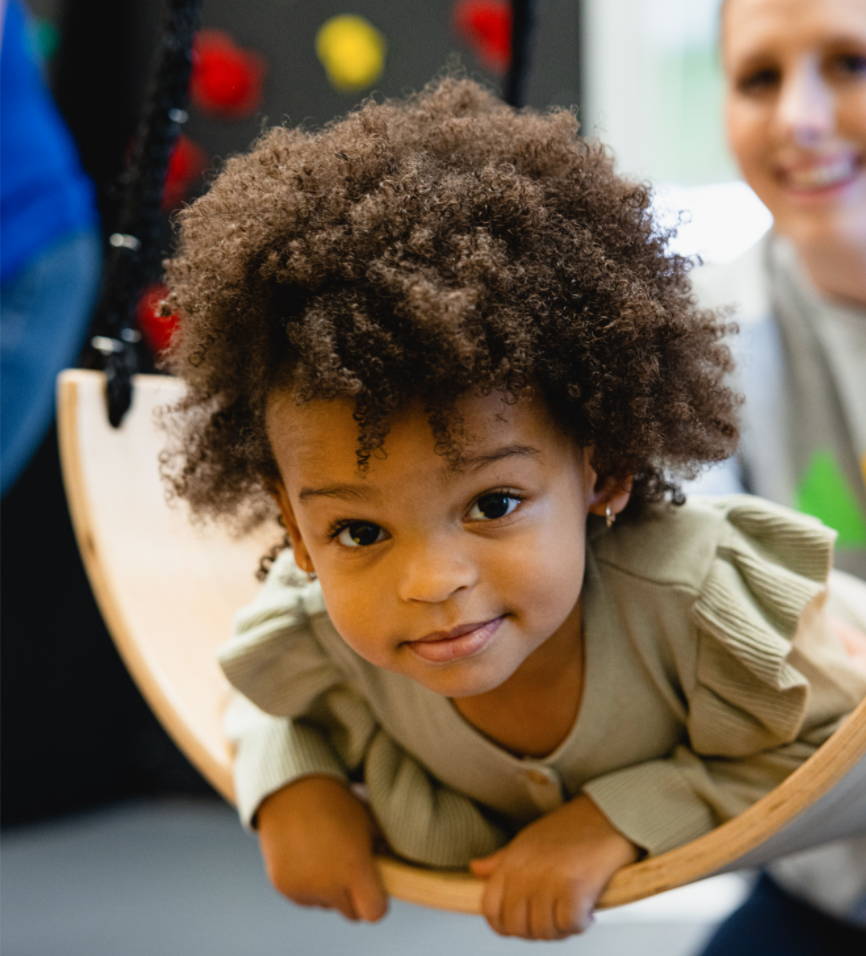8 Benefits of Sensory Play

The benefits of sensory play go beyond daycare, preschool, or occupational therapy setting. Families can engage in sensory activities right in their own home to encourage children to help developmental skills by exploring with their senses. Though Instagram is inundated with accounts showcasing perfect rainbow colored props, large pieces of play furniture that take up space, and elaborately planned activities for toddler and babies, the reality is that sensory activities don’t need to be fancy.
The fact is, it doesn’t matter if you don’t purchase anything specific for their sensory play time. Children naturally use their senses to explore their environment. From the great outdoors to your neighborhood block, backyard, or even within the confines of your own home, your children will find ways to engage with the world.
What is sensory play?
Sensory play includes any activity that stimulates a young child's senses. While the five senses, taste, smell, sight, sound and touch are well known, there are also internal senses, such as movement and balance (vestibular), body awareness (proprioception) and internal awareness (interoception). Sensory activities differ from other types of play as the emphasis on the senses amplifies the activity. Sensory play is any activity that activates one or multiple senses, and all kinds of play have the potential to become a sensory activity.
What are the benefits of sensory play for children?
Supports cognitive development
Sensory play in babies can help developing brains bridge nerve connections. New and frequent sensory experiences create connections that improve a child’s ability to do more complex learning activities as they grow.
Encourages autonomy
The use of sensory materials in this type of play creates opportunities for hands-on, self-directed, and self-centered play. It also encourages discovery and development, while also appealing to children with different learning and thinking styles.
Promotes inclusion
One of the best things about sensory play is that there’s no right or wrong way to engage in sensory-rich play. It’s inclusionary by nature! Sensory activities particularly benefit children with special needs, a second language and children who enjoy a practical approach to learning.
Enhances memory
Scientists have identified the sense of smell as one of our strongest sense and memory links. Other research linking memory recall and senses suggests our memories are scattered across the brain sensory centers. Sensory play that engages the olfactory system can create and strengthen memory recall.
Develops fine and gross motor skills
Motor skills are actions that involve your babies’ movement. From pouring sand into a cup to climbing a rope ladder, sensory play encourages babies and toddlers to move and participate in play, often using repetitive movements in both big and small ways. Children love to squish, pull, pour, stir, tap, rub, push, sniff, listen, transport, combine, make patterns and engage in role play –– all things different stages of sensory play encourage that contribute to motor skills.
Supports language development
Seeing, hearing, touching, tasting and smelling are all ways children learn to think, feel and compare their environment and the objects within it. Using multiple senses at the same time stimulates learning and language development, especially providing opportunities to use descriptive words for their new experiences.
Adapts to the environment
Sensory play can happen anywhere. The outdoor environment naturally provides a vast wealth of freely available experiences to promote a child’s senses, and it’s also a little easier for more messy play. When engaging in sensory play in the home, it’s easy to protect floor areas or table surfaces with an old plastic table cover. The bathtub or kitchen sink is also an excellent location for messy play, especially if you’re using paints or water. Sensory bins and tubs help with keeping small parts contained.
Sparks scientific thinking
Sensory play supports scientific thinking which involves inquiry, experimentation, hypothesizing, researching. It’s a fun way to challenge and hone problem solving skills without children knowing it.
Making use of sensory tables, bins and tubs
Sensory play should ideally engage more than one sense in each activity. Sensory play is often associated with just tactile play, but remember we have eight senses, which means sensory play is actually play that engages any of these senses. I love sensory activities that engage more than one sense (which is most sensory activities). Take lavender rice for instance. It’s so fun to play with and calming with the scents of lavender. However, one of the more popular areas of focus you might see for babies and small children is the tactile sense, since so much of their exploration of the world around them happens with their hands. It’s also easy to execute activities with sensory tables, bins, and tubs.
Sensory tables, bins or tubs are specially selected containers for tactile activities. Your sensory tub is limited only by the imagination and available materials. Themed sensory bins are perfect for exploring different topics, problem-solving and keeping the house somewhat clean. Match each theme, like transportation, dinosaurs, or animals with a book and song for extended learning and sensory fun.
Sensory tables and tubs may hold small items and objects that aren’t ideal for mouths. Always closely supervise babies and toddlers. Newborns can also engage in sensory activities with your help. You can brush objects against their skin, and shake and rattle containers for sound.
While playing with different sensory items is often self-directed, you can observe and ask open-ended questions to prompt learning, like:
What does it smell like?
What do you hear?
Can you describe the different items?
Your house is full of sensory materials, and there are loads of sensory themes and ideas to discover. For many children, sensory play comes naturally as they interact with their environment, and it’s us parents and caregivers that need reminding of the benefits of sensory play and how to include it in a child’s day. Contact us today to learn more!
Xoxo,
Team P2P
